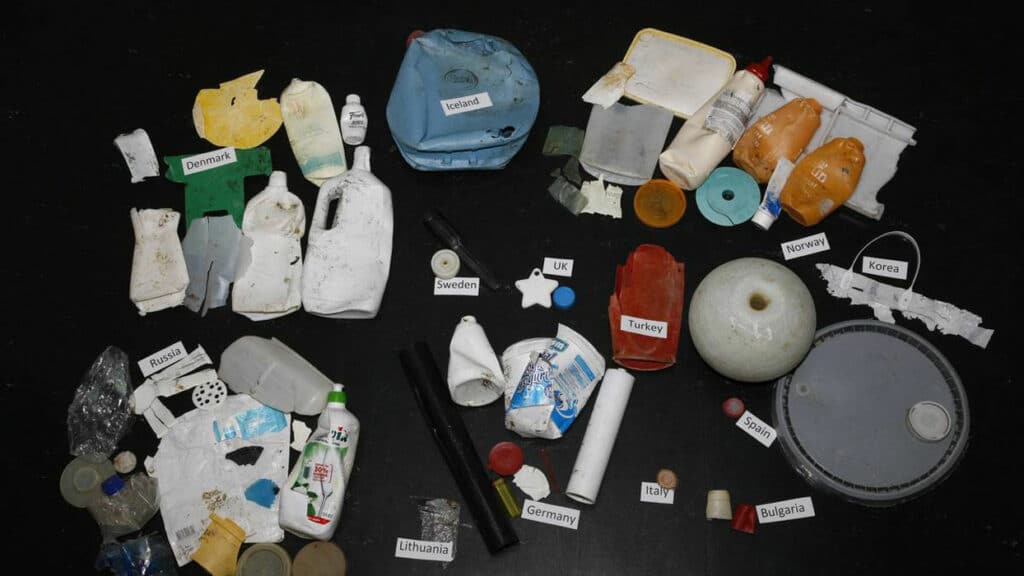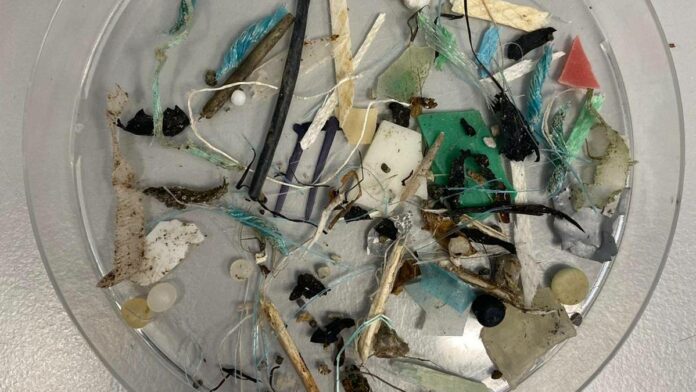Plastic waste is pervasive throughout all ecosystems and has even made it to places humans are unlikely to visit, such as the deep ocean floor and the atmosphere. Research has shown that plastic debris is now widespread, even in the furthest reaches of the Arctic. Despite modeling projections pointing to regional sources and long-distance transport as factors, there are few facts about its genesis and sources.
AWI researchers have analyzed the origins of plastic debris on the shores of Svalbard. They collected abundance and composition data of marine debris on 14 remote Arctic beaches on the Spitsbergen archipelago. They show that plastic waste in the Arctic comes from all around the world – including Germany.
The research showed that one-third of the plastic waste still had labels or imprints that might be used to determine where it originated from Europe, with Germany accounting for a large portion of that figure. The results unequivocally demonstrate that even wealthy industrialized nations like Germany contribute significantly to the contaminating far-off habitats like the Arctic.

A citizen science project conducted by the Alfred Wegener Institute, Helmholtz Centre for Polar and Marine Research (AWI) now offers the first valuable insights.
AWI researcher Dr. Melanie Bergmann, who came up with the idea for the project, and the tour guide and writer Birgit Lutz said, “In 2016, we began working with citizens to investigate the composition of plastic debris on Arctic shores.”
Researchers collected and recorded plastic debris washed up on the shores of Svalbard. From 2016 to 2021, this amounted to 23,000 items with a combined weight of 1,620 kilograms.
Bergmann explains, “We’ve now gone further and investigated where the debris that still had marks, labels, or imprints came from.”
First author Anna Natalie Meyer from the AWI said, “Our analysis found that, at 80 percent, the clear majority was plastic debris. Although most of the items could be classified as stemming from fisheries, their point of origin couldn’t be identified. In roughly one percent of the debris, labels or imprints could still be recognized – primarily from Arctic countries, particularly Russia and Norway.”
“From previous studies and computer models, we know that plastic pollution comes from local and remote sources. Locally, plastic debris finds its way to the ocean from ships and Arctic communities with poor waste management systems. As for remote sources, plastic debris and microplastic are transported to the Arctic Ocean from the Atlantic, North Sea, and North Pacific by various rivers and ocean currents.”
“For example, the experts even found debris originating from sources as distant as Brazil, China, and the USA on the coast of Svalbard. But plastic debris from Europe, especially from Germany, also ended up in the High North, accounting for eight percent of the total.”
Melanie Bergmann said, “Considering that Germany is the ‘European champ’ in both plastic production and debris exports, this comparatively high percentage isn’t surprising.”
The new findings suggest that far more trash accumulates on Arctic shorelines, making them a final sink. Previous fieldwork was conducted at the sea surface and the deep ocean floor. This plastic trash creates new difficulties for Arctic ecosystems, already overburdened by climate change. After all, the Arctic is warming four times faster than the rest of the world.
Melanie Bergmann said, “Our results highlight that even prosperous industrialized countries, which can afford better waste management, make significant contributions to the pollution of remote ecosystems like the Arctic.”
“Accordingly, to tackle the problem effectively, not only does local waste management – especially on ships and in fisheries – need to be improved. It’s equally important that global plastic production be massively reduced, especially in the industrialized countries of Europe, North America, and Asia, since roughly 11 percent of global plastic production finds its way into our waterways. This underscores the urgent need for an ambitious and legally binding UN Plastics Treaty, which is currently being negotiated and will enter into force in 2024.”
Journal Reference:
- Anna Natalie Meyer, Melanie Bergmann, Birgit Lutz. Where does Arctic beach debris come from? Analyzing debris composition and provenance on Svalbard aided by citizen scientists. Frontiers, 2023. DOI: 10.3389/fmars.2023.1092939
